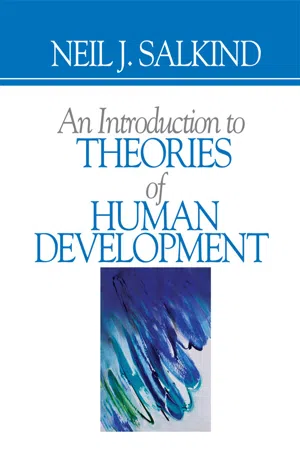Psychology
Innate Releasing Mechanisms
Innate releasing mechanisms (IRMs) are pre-programmed neural circuits that trigger instinctive behaviors in response to specific stimuli. These mechanisms are thought to be genetically determined and are present in many animal species, including humans. IRMs are important for survival and reproduction, and they help animals respond quickly and appropriately to environmental cues.
Written by Perlego with AI-assistance
Related key terms
2 Key excerpts on "Innate Releasing Mechanisms"
- eBook - ePub
Dependence in Man
A Psychoanalytic Study
- Henri Parens, Leon Joseph Saul(Authors)
- 2019(Publication Date)
- Routledge(Publisher)
Our interest in the respective roles instinctive mechanisms and experience play in determining the early psychic development in the altricial young leads us to a review of recent ethological studies. Psychoanalysis has already found it useful to apply to man what ethologists have learned from observing animals. For example, Spitz (1965b), Jacobson (1964), and Schur (1960) agree that Innate Releasing Mechanisms (IRMs) (Lorenz, 1935, 1937) play a significant part in human development. Then too, there has been the clarification stemming from the discussion of Bowlby’s theory of the nature of the child’s tie to its mother (A. Freud, 1960; Spitz, 1960; Schur, 1960; Jacobson, 1964), an issue directly relevant to the role played by dependence in the development of object relations in the human child. In the first (1958) of a series of thought-provoking papers, Bowlby hypothesized that the nature of this tie is determined by instinctive behavioral responses that lead to attachment of the child to the mother. Using an instinct model (energized by hydrodynamic principles) that does not take into account the interdigitating influence not only of instinctual drives, but also of the environment, Bowlby attempted to delineate the dynamics of the objectai tie.We hope to show that there is considerable evidence to support Schur’s (1960) suggestion, earlier stated by Freud with regard to neurosis and development (1937a; see Spitz, 1965b) and by Lorenz (1937, p. 151; 1935), that a complemental series of “innate versus acquired” factors best explains phylogenetic concepts of the development of the child and of his object relations. Schur observed that the higher one climbs the ladder of phylogeny, the greater the capacity for and the role of learning (“acquired”) in adaptation to life, and that in man, the factor of instinctive (“innate”) response patterns is greatly diluted and shadowed by learning. - eBook - ePub
- Neil J. Salkind(Author)
- 2004(Publication Date)
- SAGE Publications, Inc(Publisher)
There are also stimuli that have such power as a result of learning rather than as a result of some biological or evolutionary perspective. A signed stimulus in turn activates an innate releasing mechanism that initiates a fixed action pattern. In Table 4.1, you can see that only one of the four stimuli in the environment has the “power” to set off an IRM, which in turn stimulates some fixed action pattern. A signed stimulus acts as a trigger that activates an innate releasing mechanism, which in turn produces a pattern of motor behaviors. An innate releasing mechanism initiates a fixed action pattern, or a biologically based set of behaviors that is social in nature. Konrad Lorenz, one of the most famous of all ethologists, believed that one such IRM, or “trigger,” is common across a wide range of animals (further illustrating the commonality of form and function that many species share): the “babyish” appearance that characterizes many animals during early development. No doubt you’ve observed that many people find the young of any species much more attractive (much “cuter”) than the adults of the same species. Have you ever noticed how hard it is to walk past a new puppy without stopping to pet it? Lorenz (1965) took this idea a step further, speculating, based on the characteristics of dolls, that the toy industry tries to attract adults rather than children to its products. After all, the parents make the purchases, not the children. Lorenz asserted that some of the physical characteristics that toy makers try to incorporate into the design of a doll to make it attractive to adults are “a relatively large head, predominance of brain capsule, large and low lying eyes, bulging cheek region, short thick extremities, a springy elastic consistency, and clumsy movements” (quoted in Gould, 1980, p. 105). It’s no surprise that this description also applies to the human baby
Learn about this page
Index pages curate the most relevant extracts from our library of academic textbooks. They’ve been created using an in-house natural language model (NLM), each adding context and meaning to key research topics.

